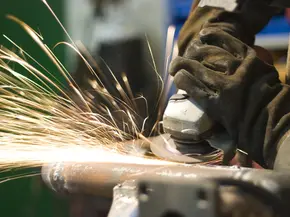Cluster Flies
About
These flies have the habit of coming indoors in late autumn to hibernate during the cold winter months, they are often found in groups or clusters of many hundreds, if not thousands.
During the summer they live out-of-doors and can often be seen sunning themselves on fences, walls and tree trunks. Indoors, they congregate in roof spaces and dark corners of attics and little-used rooms. Flies can also enter via sash window boxes, cracks round window frames and unused Venetian blinds or curtains.
Occasional warm days in the cooler months bring cluster flies out of their hiding places and they crawl or fall into rooms. You may have experienced windowsills covered with buzzing flies spinning round and round in uncoordinated attempts to fly. The following spring, the flies start moving again, and the problem reoccurs. The appearance of these lethargic flies causes considerable annoyance, although they are quite harmless.
Although we know why clustering flies seek shelter in this way, we do not know why they enter certain buildings in preference to other adjacent or nearby properties. However, once a building has been invaded, it is almost certain that more flies will return in subsequent years.
Types
Cluster Fly
The larvae of a cluster fly live as a parasite inside earthworms. Eggs are laid in the soil and hatch in about a week. The young larvae bore into worms where they stay throughout the winter. In spring the larvae develop quickly, usually killing the worms, then pupate in the surrounding soil. The adult flies emerge in summer. These are large flies (10mm long), with a shifting pattern of silver and grey-brown markings on the abdomen, and crinkly yellow hairs on the thorax.
Yellow Swarming Fly
The Yellow Swarming fly a predacious species, the larvae feeding on aphids living on the roots of grasses. There are two generations each year, the later one usually over wintering as pupae in the soil. However, a warm spell in late autumn may cause the adults to emerge prematurely, and they then invade buildings for shelter when the weather becomes colder. The adult flies are very small (2.5 - 3mm) and are bright yellow with black markings.
The Autumn Fly
Breeds in animal dung in fields. Adult females are almost identical in appearance to common house flies, but males are distinctive in having an orange abdomen with a black mark down the centre.
Control
Complete control of cluster flies is almost impossible since the over wintering adults are concealed in walls, attics, etc. and often it is impossible to prevent them getting in, and success with the killing of one species may be negated by the later appearance of more flies, often of another species.
Treatment of roof spaces can be carried out using an insecticide smoke generator or a ultra low volume fogging treatment.
CAUTION. Bats may be living in areas of buildings such as roof spaces, which are used by cluster flies. Bats are protected so care must be taken to survey for signs of bats.
Need information? Contact us!
*Required fields
Contact details
Your legal name is the name that appears on your official documents.





